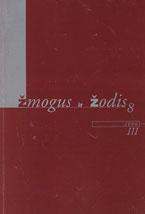Stylistic use of English Gender
Stylistic use of English Gender
Author(s): Nijolė BražienėSubject(s): Language and Literature Studies
Published by: Vytauto Didžiojo Universitetas
Keywords: gender category; deviation; stylistic function; connotative meaning; personification.
Summary/Abstract: The article analyses stylistic usage of the category of gender in English, its different connotative meanings. Unusual, not motivated and even illogical use of the masculine, feminine or neuter gender is often related to personification, "upgrading" or "downgrading", as well as with generic he. In the English language the use of the personai pronouns he and she with nouns denoting animals, plants or inanimate objects is more expressive than in Lithuanian. It is a more attention-attracting phenomenon creating a certain psychological effect and providing foregrounding. In Lithuanian the gender of nouns is a morphological category; therefore, the use of the pronouns he or she with nouns denoting animals or things is a norm, without any deviation or connotative meanings. Here, every table is he, and every chair is she. Although little attention is paid to the category of gender in traditional grammars of English, stylistic gender usage is a significant aspect of linguistic awareness and language teaching or learning.
Journal: Žmogus ir žodis
- Issue Year: 08/2006
- Issue No: 3
- Page Range: 9-14
- Page Count: 6
- Language: English

